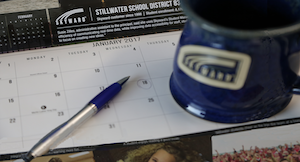Red Flags or Gold Stars: Flipping the Script on Behavior Tracking
BY Erin Werra
What’s the first thought that comes to your mind when you hear the phrase “behavior tracking”?
Is it “discipline”? Or more along the lines of “positive behavior management”?
We know behavior tracking doesn’t have to be inherently punitive. Through systems like Positive Behavioral Interventions and Supports (PBIS) that focus on prevention and not punishment, schools teach students positive behavior strategies just as they would teach math or science.
In PBIS schools, everyone—students, teachers, school leaders, and even custodians and lunchroom attendants—know what positive behavior looks like, and they use a common language to talk about it. It’s a school-wide approach to positive behavior management.
In a school with a more traditional view of disciplinary action, behavior would be corrected through punishment—detention, suspension—with a student being expected to behave after. In a school implementing PBIS, a student’s behavior is seen as a form of communication.
For example, if a student is talking loudly while others are trying to work, it might signal to their teacher that they’re craving attention—and the teacher might offer the student a chance to share their opinion with the rest of the class. If the student continues to talk loudly, there might be other strategies involved—a chance to talk with a peer, or giving the student a break from the classroom. If the behavior continues, strategies continue to be tested and changed.
There’s plenty of evidence to support that systems like PBIS lead to better student behavior. However, critics of these systems also say there are flaws, and the fact that PBIS provides positive support for “appropriate” behavior implies that “appropriate” and “inappropriate” behaviors are neutral concepts. Because of personal and unconscious bias, these concepts are rarely neutral—which can lead to inequities in school discipline. And, the road to a school or district becoming a PBIS school is a long one, with many implementations taking between three to five years—and a lot of trial and error.
So, what should schools do if they want to start taking a different approach to behavior tracking, and move away from reactive and punitive to proactive and positive? It starts with these mindset and school culture shifts:
Changing our vocabulary around behavior tracking
Instead of behavior tracking being synonymous with discipline, start to consider how you might track positive student behavior data within your classroom, school, or district. Good examples of positive student behavior worth tracking are skills that can be used long-term to improve a student’s college and career aspirations—actions like self-care, self-motivation, time management, or working well in groups.Tracking behavior similarly to grades
We don’t scold students for struggling academically—instead, we utilize programs like Multi-Tier System of Supports (MTSS) and Response to Intervention (RTI) to intervene and improve. Could behavior be tracked in the same way? Often behavior issues point toward academic issues (and vice versa), so tracking and providing students with adequate support in both of these areas can be a tremendous help.Making it a habit to record behavioral data
Data about a student’s behavior is just as important as their academic data, but there are still many schools who don’t routinely record and analyze these insights. Collecting this kind of big-picture information can make a difference when it comes to predicting student success. Uncovering the causes and triggers of a particular behavior—and turning that data into action—could help schools not only improve behavior, but academic achievement.And, record keeping is essential to early intervention for behavioral issues. If teachers, school staff, or administration need to address something with a particular student, it needs to be recorded somewhere.
But where, oh where can you do that?
Enter: your student information system (SIS).
Student data is housed in a student information system for a good reason—these records need to be kept for a certain amount of time, depending on the type, and carry requirements based on when students graduate or leave the school system. Additionally, FERPA (the Family Educational Rights and Privacy Act) also applies to SIS records, which ensures confidentiality while creating the records that are needed to identify when a student may need a behavioral intervention.Speaking of intervention, because behavior tracking data lives in your SIS alongside other student records—attendance, grades, and demographics, to name a few—it's easier to see a holistic view of the whole child. Housing all student data securely together makes it easier to spot trends quickly and intervene sooner. A swift action plan can make a huge difference for a child that needs just a little extra support to make it back onto a stable path forward.
A mindset shift around behavior tracking—paired with strong data records courtesy of your SIS—can help schools track behavior in a way that’s both positive and helpful for students.
Follow-up resource: Looking for additional insights as you work to rethink your school’s approach to behavior tracking?
Here are a few of our favorites:Playing Catch-Up With Student Behavior
Is “Discipline” An Outdated Word?
Intervention Needs An Abundance Mindset
WHAT'S NEXT FOR YOUR EDTECH? The right combo of tools & support retains staff and serves students better. We'd love to help. Visit skyward.com/get-started to learn more.

|
Erin Werra Blogger, Researcher, and Edvocate |
Erin Werra is a content writer and strategist at Skyward’s Advancing K12 blog. Her writing about K12 edtech, data, security, social-emotional learning, and leadership has appeared in THE Journal, District Administration, eSchool News, and more. She enjoys puzzling over details to make K12 edtech info accessible for all. Outside of edtech, she’s waxing poetic about motherhood, personality traits, and self-growth.




